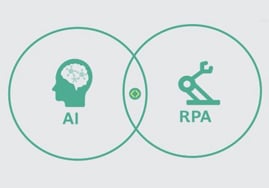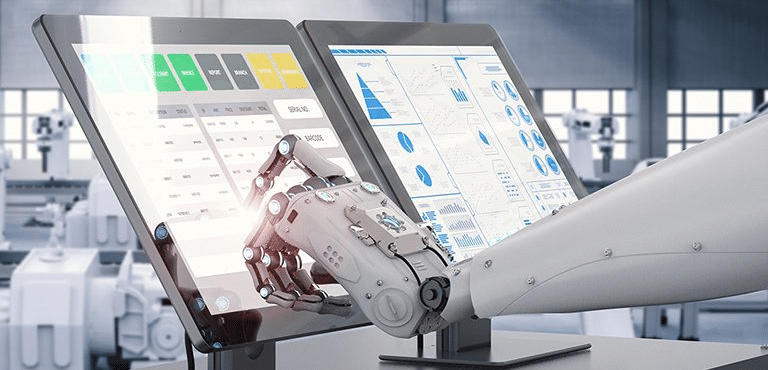So here we are again, as we were in 2019, with a blog post on predictions for the upcoming year. It’s a good time to reflect on the year past and look ahead to what the future might hold. In that vein, we have laid out a few of our top predictions for process automation in 2021.
Prediction 1: Automation adoption will be rapid and necessary

Last year, there were big predictions for the growth of process automation. Some even pegged RPA to be the biggest growing segment of software offerings. And in many ways it did see a surge of popularity, albeit perhaps not quite the spike some analysts expected. Much of that was, of course, due to the pandemic that disrupted the entire global marketplace. But this year, as we settle into a post-pandemic world, process automation will likely see explosive growth and implementation, especially with stakeholders and operations spread out across remote locations.
In their 2021 forecast, Gartner estimates 90% of large organizations will adopt RPA in some form by 2022. Interestingly, this is not so much in spite of the pandemic, but rather because of it. This year, businesses will be looking to scale automation for critical business processes while simultaneously resetting the human workforce dynamics.
This will also likely create increased demand for natively developed capabilities that offer more diverse technology to cater to an evolving business landscape.
Prediction 2: The journey from RPA to AI will be a continuum and not disparate effort

Last year we opined that the C-Suite would make RPA an integral part of their overall business strategy. For 2021, we predict that this will come into even sharper focus, requiring a comprehensive approach that is representative not of individual gains, but rather, enterprise-wide value.
It is true that individual, separate automation efforts will create benefits fairly quickly, but these are often singular, low hanging fruits. To drive impactful business outcomes, the entire business must be considered. In this way, a centralized approach to process automation will become a key component for many organizations in 2021. What’s more, the acceleration of process automation with AI is almost certain to come into play, as many organizations begin to scale their process automation capabilities.
Prediction 3: The ability to measure ROI on RPA investments will drive the automation adoption decision

Amidst increased urgency of automation adoption, enterprises will be pushed to build an effective business case for process automation—one with demonstrable potential for ROI. As the business landscape changes, traditional ROI metrics may not provide adequate visibility into the costs or the beneficial impacts of new technology adoption.
Our recent survey suggests that many businesses are not confident in how they measure ROI for their process automation initiatives today. The most effective way to build this case is to create a custom formula that effectively addresses the entirety of the impacts RPA can have on a business. Read more about creating your own custom ROI formula for RPA here.
Prediction 4: Upskilling employees will be a primary focus

Automation and artificial intelligence will create a skills gap for some workers. While this may sound like job displacement, it does not have to be. Retraining and upskilling the workforce is the best way to keep up in an evolving market landscape. Not only that, but when done correctly, you can build a training plan in a way that it becomes a driver of positive change. Help employees understand that technology is there to support them. This is exactly what we mean when we refer to elevating human potential. Humans can do more of what they’re best at, and less of the mundane work that’s better suited for technology. Process automation is not about displacing or replacing talent; it’s about redirecting resources in a way that improves efficiencies, and in some cases that means upskilling workers.
Our recent blog dives into this concept more thoroughly, where we discuss best practices for upskilling your workforce, along with recommendations for rolling out an educational plan.
Prediction 5: Employee satisfaction will be as big a priority as customer satisfaction

Employees and customers alike both experienced the same pandemic as businesses in 2020. As such, both sets of people will play an important role in how organizations perform in 2021. Keeping both groups’ priorities in mind will be critical. Process automation should be viewed–and thus communicated as such from team leaders–as something to support the human workforce, not something to compete with it. Consider the dynamic culture will play, and check out our recent blog where we offer some insight into how to better address cultural challenges with process automation.
One thing is clear: 2020 was a year like no other, and it has implications for 2021 and beyond. Any predictions you’d add for this year?

